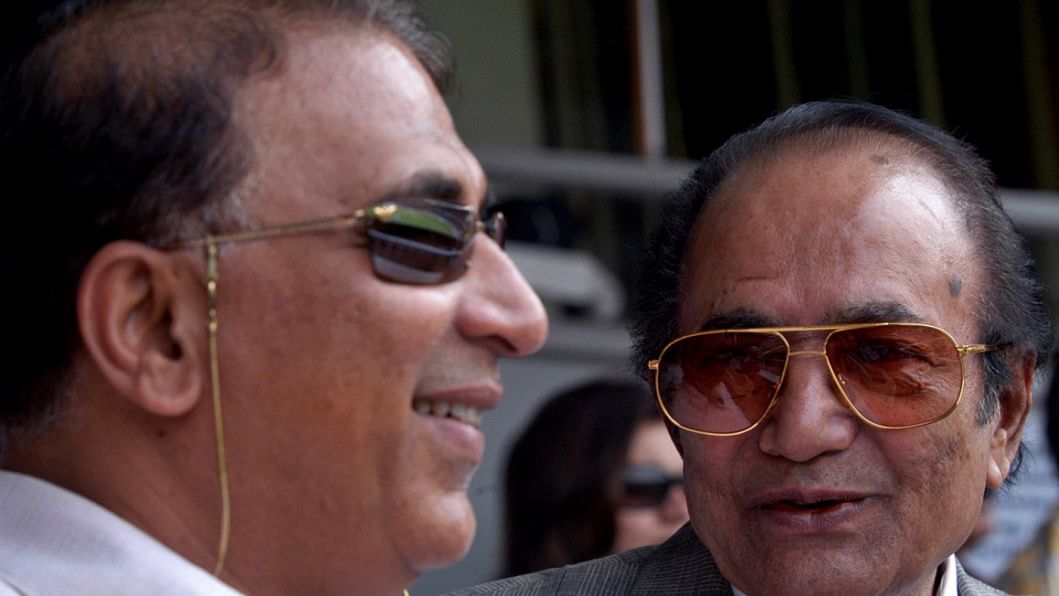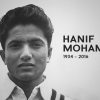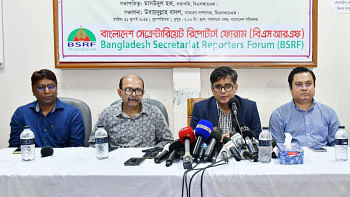The original Little Master

Last month I looked at the contenders for the title of India's first great batsman. Therefore, it seems somewhat logical to now consider the first great batsman from Pakistan.
If we apply the same eligibility criteria as for India, in that the batsman must have played Test cricket for their "home" country, we commence the search in Pakistan's first-ever Test match in October 1952. And we can also stop the search right there, because the answer is staring at us from the very top of the batting order. Hanif Mohammad opened the innings in that game, and he is his country's first great batsman.
Hanif was born in Junagadh, India on December 21, 1934. He was the third of five children, and cricket was clearly a significant aspect of the entire family's daily life. At least one of the Mohammad brothers was selected in the first 101 Tests that Pakistan played. Ultimately, four Mohammad brothers (Hanif, Wazir, Mushtaq, and Sadiq) played Test cricket, with the fifth brother (Raees) being named 12th man for one Test in 1955.
In 1947 a 13-year-old Hanif moved with his Muslim father and the rest of the family to Karachi. Even at this early point in his career, Hanif was demonstrating both a copybook technique and an aptitude to bat for long periods. While playing for his new high school, Sind Madressah Tul-Islam, he established an inter-school record of 305 not out on a matting wicket, which was common in Karachi. This innings was built over a period of seven and a half hours.
Performances such as this brought him to the attention of some leading cricket coaches in Karachi. One of these was Abdul Aziz Durani, a former wicketkeeper and father of future Indian Test cricketer Salim Durani, who had played an unofficial Test match for All India against the touring Australian team in 1936. Aziz started providing specialist coaching to Hanif, with an initial focus on helping him adapt his technique to incorporate both front- and back-foot play. Hanif's father died shortly after the family's move to Pakistan and Aziz appears to have been a father figure for Hanif during his teenage years.
The combination of determination, skill and performance in local Karachi grade cricket saw the 16-year-old Hanif chosen to play against the touring English (MCC) team on November 15, 1951, his first-class debut.
Hanif was selected as both an opening batsman and wicketkeeper, which is a combination of roles that has proven beyond the capabilities of most players. Against fast bowlers, including the likes of Brian Statham and Derek Shackleton, and on turf rather than the more familiar matting, Hanif batted well in scoring 26 out of an opening partnership of 96 with partner Nazar Muhammad (no relation). This performance with the bat, combined with satisfactory wicketkeeping, saw Hanif retained for the second game.
This match was played on matting in Karachi and Pakistan recorded their first victory over another country, defeating England by four wickets. While England were not at full strength, this victory would prove invaluable evidence of Pakistan's readiness to join the Imperial Cricket Council (ICC) as an independent Test nation. Hanif was a key figure in the win, top-scoring with 64 in Pakistan's successful chase of 288.
It is of considerable credit to Pakistan's cricketing hierarchy of the 1950s that they recognised the need for their younger players to gain experience of playing in different conditions. They established a programme that saw Hanif supported to attend Alf Gover's famous cricket school in England for 15 days in 1951. The fine coaching work of Aziz is underlined by the fact that Gover, after reviewing Hanif's technique, insisted that no changes were required.
Gover helped Hanif work on his mental approach and concentration. The time spent in England was highly beneficial to Hanif, and the results showed soon afterwards on Pakistan's first Test tour to India for a series of five Test matches. Hanif became the youngest player to make a century in each innings of a first-class match while scoring 121 and 109 against North Zone in Amritsar. No other Pakistan player managed to score a century in either innings of the game, a trend that would follow Hanif throughout his career.
Hanif was still only 17 at the time of his Test debut. However he had quickly established himself as one of Pakistan's premier and most dependable batsmen. Abdul Hafeez Kardar had the honour of leading Pakistan in their first Test, and prior to the match he spent time with Hanif clearly outlining his role in the side. Kardar felt that the Pakistan batting order was inclined to collapse, so he asked Hanif to limit any risks and assume the sheet-anchor role.
Hanif fulfilled this role to perfection in Pakistan's opening Test, scoring the first fifty for his country. Unfortunately, his 51 came out of a team total of only 150. Hanif maintained his consistent form throughout the series in scoring 287 runs at an average of 35.87 with a highest score of 96 in the third Test. This innings highlighted Hanif's excellent concentration as he batted for over six hours. However, once he was caught at silly mid-off, four short of his century, the remaining seven wickets fell for just 71 runs and India romped to a ten-wicket win.
Over the next few years, when he gave up his wicketkeeping gloves to focus on his batting, Hanif played series' against England, India and New Zealand. During the 1954 series against England, Hanif took the sheet-anchor role to an extreme level, scoring 20 runs off 223 balls in the first Test at Lord's, which statistician Charles Davis reports is the slowest innings of its size. Soon afterwards, Hanif scored his first Test century in a match against India in Bahawalpur in January 1955. Hanif's position as opener was secure, but he had been failing to put together the big scores consistently.
However, he would soon show the world why he was rated so highly by his peers. Pakistan toured the West Indies in 1957-58, with Hanif scoring 628 runs in the five Tests at an average of 69.77. Hanif was to become the first Asian player to score a triple century in a Test when he scored 337 in the first Test in Bridgetown which was played over six days.
Chasing West Indies' imposing first-innings score of 579, Pakistan had capitulated for just 106. Forced to follow on, Pakistan started batting again before tea on day three. By tea time on day four, Hanif had moved to 139. Tea on day five saw Hanif undefeated on 216. And tea on day six saw Hanif still at the wicket, with 334 to his name and Pakistan safe from a defeat that looked inevitable three days earlier.
Hanif batted for an astonishing 970 minutes and compiled century partnerships with four different players including his brother Wazir. No other Pakistan player managed to reach the century mark individually. Even taking into account a clearly docile pitch, this mammoth effort remains the longest Test match innings in terms of time and showed his amazing capacity to concentrate for long periods. No record of how many balls Hanif faced is available. However it is the longest innings in terms of overs faced (309) and his final score of 337 still remains a Test record for any player from India or Pakistan.
Hanif maintained this rich vein of extreme high scores when the team returned home. He established a first-class record highest score of 499 for Karachi against Bahawalpur in 1959. Ironically, he was run out in the final over of the game, searching for his 500th run.
Hanif was now almost universally seen as Pakistan's leading batsman. However, Hanif began to be weighed down by the responsibility of being their mainstay. Never a fast scorer, his strike-rate was stalling even further as a result of not wanting to risk getting out and triggering a collapse. When Hanif scored a century in each innings against England it took 893 minutes, at a scoring-rate of less than 15 runs an hour.
Hanif's 1962 tour of England saw the first sustained series of poor scores in his career, with 177 Test runs at an average of 17.70 and a highest score of just 47. The opportunity to redeem himself arrived five years later. He was nearing his mid-30s, and the English fast bowlers thought he was vulnerable to the short ball. John Snow, in particular, bounced him repeatedly but Hanif responded by scoring 187 not out in the first Test at Lord's. This innings is now considered one of Hanif's best performances, and was rated by John Arlott as the best knock of the summer. It was still very slow however, taking 556 balls. The match ended in a draw.
It was fascinating to read that Hanif has the highest proportion of Test centuries in which no team-mate also scored a century. This reinforces the fact that he carried the responsibility for Pakistan's batting success. Hanif was the only truly world-class batsman in the Pakistan side for well over a decade, but, by the late '60s, his consistency was starting to wane. Hanif decided that the time was right to retire. He finished his Test career with 3915 runs with 12 centuries and 15 fifties.
While a Test average of 43.98 may not initially appear incredibly impressive - it was sitting at over 47 just a few Tests prior to his retirement - it compares very well to the majority of his peers, such as Kardar, who averaged in the 20s and 30s. It is also worth recognising that not many batsmen have coped with the pressure of almost single-handedly carrying a fledgling nation from their first Test onwards*.
Also, unlike some of his fellow players from India and Pakistan, it is hard to argue that Hanif was a "home-ground bully". He scored Test centuries against all his Test playing opponents in "away" conditions, countering any claims that he lacked the ability to adapt. In fact, it is possible to argue that his best three batting efforts occurred in the West Indies, England, and Australia. His away average of 42.62 compares well with his overall average of 43.98.
Following his retirement from cricket, Hanif ran the Pakistan International Airlines colts scheme and this coaching and talent identification programme went on to produce a number of Test cricketers. Hanif founded and acted as chief editor of a magazine, the Cricketer Pakistan, from its inception in 1972 and also served in a number of roles with the national team, including as a batting consultant in 2002. Hanif was recently operated on for liver cancer, and we offer our best wishes for his continuing recovery.
* The great George Headley comes close, but his first Test occurred nearly two years after West Indies' inaugural Test match against England in 1928. Still, he certainly carried West Indies' batting expectations in their early years in a similar manner to what Hanif was to do with Pakistan a few decades later.







Comments